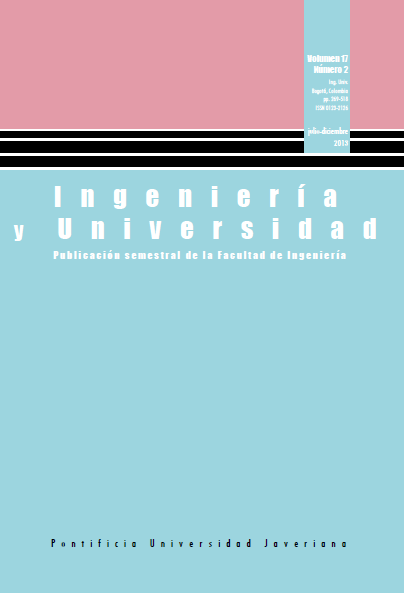Maximization Model of entropy and generalized costs for urban travel distribution
##plugins.themes.bootstrap3.article.details##
In this paper we propose the formulation of a model for urban double travel distribution delimited at origin and destination, based on the maximization of entropy and minimization of the generalized travel costs by relaxing the condition that such costs are a parameter, extending the formulation under the assumption that they are fuzzy variables with an intervalar function. In addition, given such assumptions, we propose a formulation of an optimization model associated with discrete choices, and we present a proposal for using the model in predictions. A numerical example is developed for explaining the theory developed.
Travel distribution, maximization of entropy, fuzzy optimization, intervalar costsdistribución de viajes, maximización de la entropía, optimización difusa, costos intervalares.
DELL`ORCO, M. y KIKUCHI, S. An alternative approach for choice models in Transportation: use of possibility theory for comparison of utilities. Yugoslav Journal of Operations Research. 2004, vol. 14, núm. 1, pp. 1-17
FANG, S.; RAJASEKERA, J. y TSAO, H. Entropy Optimization and Mathematical Programming. Norwell, MA: Kluwer Academic Publishers, 1997.
LÓPEZ, H. Introducción a GAMS y su aplicación en la solución de modelos matemáticos de optimización. Cuadernillo cursillo XXII Coloquio distrital de Matemáticas y estadística. Bogotá: Universidad Nacional de Colombia, Departamento de Matemáticas, 2006.
MARTÍNEZ, F. Access, the Economic Link in Transport-Land Use Interaction. Transportation Research B. 1995, vol. 29, núm. 6, pp. 457-47.
MARTÍNEZ, F. y ARAYA, C. Note on Trip Benefits in Spatial Interaction Models. Journal of Regional Science. 2000, vol. 40, núm. 4, pp. 789-796.
MOMENI, H. Y NAZEMI, J. A fuzzy-random Utility Model of Consumer Choice; Uncertainty Effect. World Applied Sciences Journal. 2010, vol. 8, núm. 10, pp. 1183-1192.
ORTÚZAR, J. y WILLUMSEN, L. Modelos de transporte. Santander: Publican, Ediciones de la Universidad de Cantabria, 2008.
ROMERO, J. Notas sobre Máxima Entropía. Documento de trabajo. México: UNAM Facultad de Ciencias, 2008.
ROMIK, D. Stirling’s Approximation for n!: The Ultimate Short Proof? The American Mathematical Monthly. 2000, vol. 107, núm. 6, pp. 556-557.
SHANNON, C. E. A mathematical theory of communication. Bell System Technical Journal. 1948, vol. 27, pp. 379-423 y 623-656.
WANG, X. y XIAO, M. Approach of group decision making based on normal distribution interval number with incomplete information. Journal of Control and Decision. 2010, vol. 10. 1494-1498.
WILSON, A. G. Entropy in urban and regional modeling. London: Pion, 1970.


